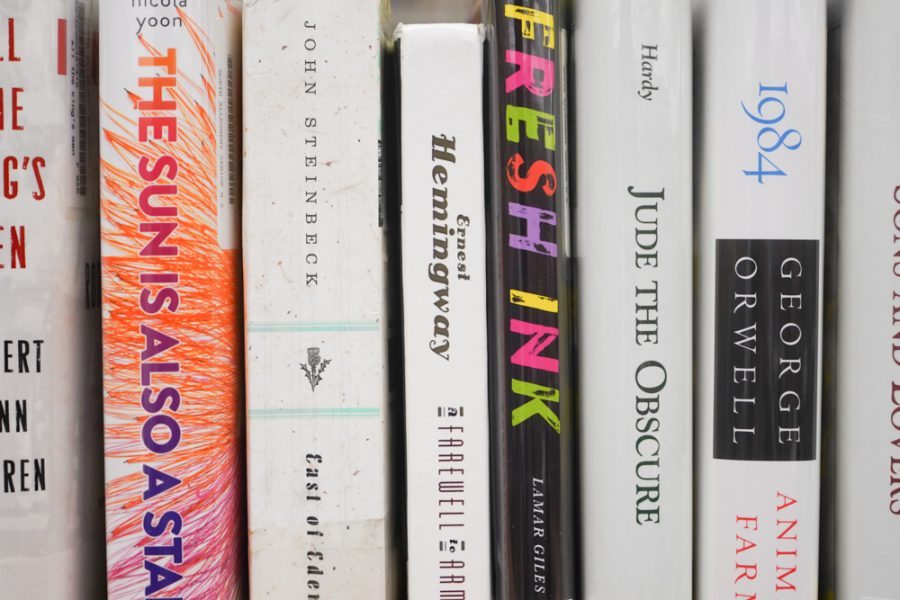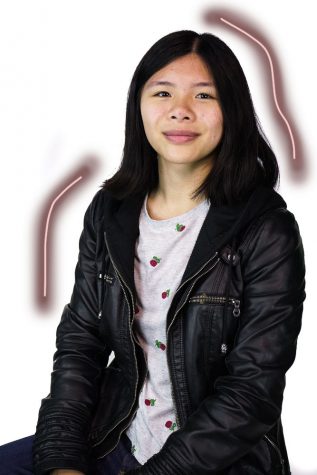White by Default
Disappointingly, too many novels still lack diversity and accurate portrayals of minorities in the 21st century
Though we live in a world more diverse than ever before, the majority of popular novels we read are skewed heavily in their characterizations.
Think about your favorite books. Picture the main characters.
How many of those characters are anything other than white?
While things are improving across the board for representation in media, some of the most popular fantasy series, such as Harry Potter, The Hunger Games, and Percy Jackson, still feature a majority or only white main characters. These series do have minority characters, but often with significant flaws.
Cho Chang, a Chinese character in Harry Potter, has two Korean surnames for her name. District 11, one of the poorest districts in The Hunger Games, is made up entirely of black people with hardly any other ethnicity shown. No main characters in Percy Jackson are people of color, save Grover being changed to black in the movie. Although, I do give Rick Riordan credit because he wrote the series for his son, who has ADHD and dyslexia, and because he created diverse main characters in his later books – looking at you and your tweets J.K. Rowling.
I would like to make a point that this will not be addressing nonfiction, as that is not related to choosing the traits of a character since those are real people. Addressing the lack of diversity here will only apply to stories where the writer has created the characters and has not based them on real events or people.
Consider the difference between The Lord of The Rings and A Thousand Splendid Suns for reference. The former can do basically anything with the characters, including different species altogether, while the latter must write characters that are representative of the region and the time that the story takes place in. I am specifically talking about fiction because the author has full control over the story. They decide the character’s race and sexuality. When there are so many people in the world, why is it so common for these characters to be white and straight?
It is seen as the default setting to be white and straight. When a character isn’t, you can almost guarantee on people asking why. Characters that fall outside of those two groups seldom exist unless they have a narrative reason for not being so. If it drives the plot, characters are allowed to be different. If it doesn’t, people ask why. Bonus points if they complain about it trying to be politically correct for having diverse characters.
You don’t need justification for a person to exist.
People are not born to fulfill some kind of diversity quotient. There is no reason that any person is a certain way. Those questions make it seem as though people who are not white and/or straight, among other things, are required to have adequate reasoning for being so in order to be accepted.
There are problems with characters being included just to appeal to different demographics, especially when it is painfully obvious, but that should not be used as an excuse to invalidate ones that were not created for that reason. Diverse characters are often used for appeal (see: “queer baiting”), but it’s more important that these characters are making it into stories at all.
One of the main complaints for these characters is that “I couldn’t tell that they were (insert race/sexuality here).” This once again falls under justification for simply existing as well as falling under stereotyping. It is important to include diverse characters while also not shouting “Look I have an (insert race here) character!”
Take Leo Valdez from Percy Jackson for example. I have heard complaints that he is not representative enough of his heritage. I stand to believe that those complaints are misguided. He speaks Spanish, has Latino features, and calls his babysitter “Tia.” As none of the other characters in the series have much information shared about their early lives or heritage, it would be uncomfortable and unnecessary to add much more detail about Leo in order to show that he is a person of color.
Additionally, not everyone is in touch with their heritage, especially in a country that is made up of immigrants. It wouldn’t be accurate to portray every person of color living in a house with cultural decorations and being able to speak another language. In real life, culture and language differences cause rifts between family members, which is an interesting and relatable conflict a writer could use within reason. Bojack Horseman exemplifies this in Season 5 with Diane, a Vietnamese-American, traveling to Vietnam to attempt to connect the heritage that her family ignores. In fact, Bojack Horseman is one of the most diverse and inclusive shows that I have ever watched and it stars a talking horse.
Clearly, I am not white, and I am one of those people who isn’t exactly representative of their culture. I don’t have much of a connection to being a person of color beyond the physical, but I thought that I would at least be aware of it. That’s why it was surprising to realize that two years ago was the first time that I read books that had Hispanic or Asian leads, not just one person in a group of main characters. Unsurprisingly, both of those books were written by authors of those respective ethnicities.
We need diverse people to write diverse characters. We also need more writers to talk to different people in order to create believable, diverse characters in their novels.
This is a complex topic that goes deeper than just creating more characters that aren’t white or straight and needs to be handled carefully. Some authors still can’t figure out how to make realistic female characters. Handing them a person of color might just be too overwhelming.
It’s sad to think that even now, in an age that’s supposedly all about diversity, people still get excited when they see themselves represented. It’s a celebration where writers and directors are praised for depicting any person who isn’t white or straight. One day, I want to live in a world where diverse characters are abundant and reflective of the world we live in.
As hard as I’ve tried to make my case here, my friend Malia Wilson, a NASH senior, recently put it far more poignantly, so much so that I’ll give her the final word:
My brother didn’t see a black teacher until he was in sixth grade. Until then, he didn’t know people like him could be teachers. Some of you will read that and think, “That’s ridiculous. People can be whatever they want, he must’ve been stupid,” but you have probably never been in a room without one person that’s like you. You have probably never seen a movie or read a book or watched a television show without at least one person that’s like you. And you probably have never had ancestors who couldn’t be whatever they want.
Understandably, it’s hard to understand the argument for more representation if you’ve never experienced a lack of it. For example, a popular argument is, “Why does it matter what race they are? We’re all humans.” People who say that aren’t being malicious, they just don’t understand the baggage that comes from being not white, straight, abled, etc. Things are different for those of us born otherwise. A white person and a black person can be in the same situation and think wildly different things because of the context of their race, and that is what’s important to represent. The more representation, the easier it will be to understand each other.





Zack Hull • Jan 24, 2020 at 11:48 am
Great piece, Katie, as usual.